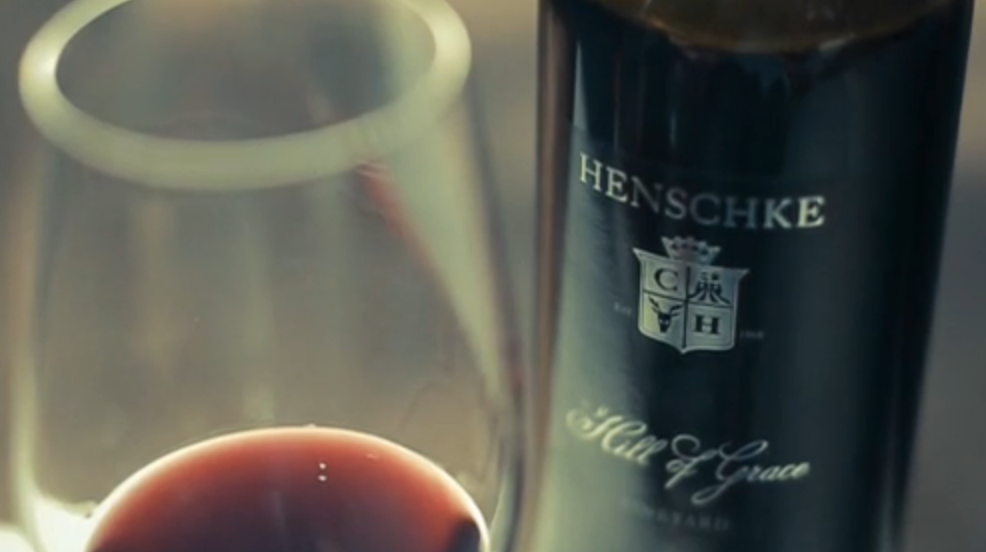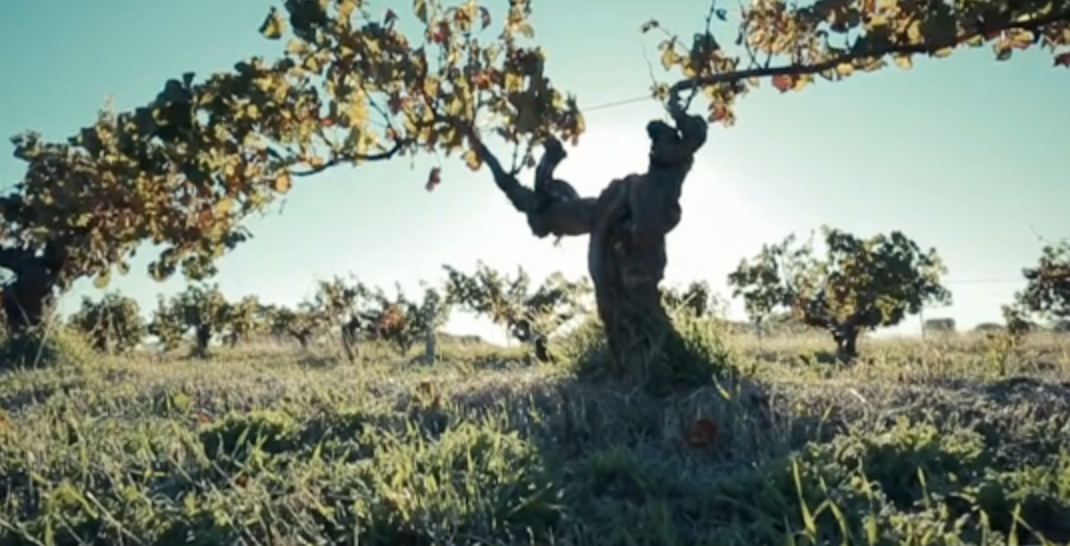Tasting Report: Henschke Hill of Grace Vertical
 Whenever I visit the Hill of Grace vineyard, perched up in the Eden Valley next to the angular Gnadenberg Lutheran Church, its cemetery and some old ruins, I inevitably catch myself alone, standing and staring at the oldest vines planted in 1860 by a bloke called Nicolaus Stanitzki. It’s a state of wonderment in which I stand, in awe of the more than 150 years these vines have witnessed and the implied wisdom of their gnarly, wisened old bodies.
Whenever I visit the Hill of Grace vineyard, perched up in the Eden Valley next to the angular Gnadenberg Lutheran Church, its cemetery and some old ruins, I inevitably catch myself alone, standing and staring at the oldest vines planted in 1860 by a bloke called Nicolaus Stanitzki. It’s a state of wonderment in which I stand, in awe of the more than 150 years these vines have witnessed and the implied wisdom of their gnarly, wisened old bodies.
Known today as the Grandfathers, these are the centerpiece of the Hill of Grace vineyard, sitting among thirteen plots of variously aged vines. Of these plots, just seven are planted to shiraz, the others comprising riesling, semillon and mataro. Aside from the 1860s plantings, which sit right at the center of the vineyard, other shiraz plantings date from 1910, 1951, 1952, 1956, 1965 and 1989, with a section of the 1952 Church Block replanted in 1997.
This tapestry of vineyards within a vineyard is reminiscent of the scale and intricacy usually associated with Burgundy Grand Cru vineyards. There’s a hierarchy at work, the oldest, wisest vines set the meter for many of the most important viticultural tasks, certainly harvest, and they are the cornerstone of the wine as each vintage matures and is assembled in the winery.
The texture, tone and character of the wine from these ancient plantings forms the reference point for the other components to form around and not every shiraz component from vineyard is guaranteed a path through to the final blend. Each vintage has its own sway as to which parcels perform best, but it’s also very much about achieving the right style and balance. And that’s one area where old vines famously come into their own.
 Since that first release from the 1958 vintage, the vineyard has had several phases in its evolution, all reflected in apparent generations of wines made across more than 50 years. Re-plantings, different viticultural regimes and, most recently, biodynamic farming methods have all made their mark. Thankfully, phylloxera has not.
Since that first release from the 1958 vintage, the vineyard has had several phases in its evolution, all reflected in apparent generations of wines made across more than 50 years. Re-plantings, different viticultural regimes and, most recently, biodynamic farming methods have all made their mark. Thankfully, phylloxera has not.
This vertical tasting was presented at the winery in 2013 where the bottles had been stored since bottling, with the exception of the 2009 vintage that was tasted recently as part of the latest Henschke new releases.
It’s an extremely rare thing to taste such a deep vertical collection of wine from just one vineyard at the winery in which they were made. These oldest Hill of Grace bottles do not appear in today’s auction catalogues where you’ll still find early vintages of Penfold’s Grange. The Henschke cellar, it is rumored, has just one more bottle of the inaugural ’58 Hill of Grace tucked away.
The bottle of ‘58 tasted here proved the adage of “no great old wines, just great old bottles,” opening with determined expressive life, fully mature, yet still very much alive. I shall think about that bottle next time I stand staring at those old 1860s vines, thinking about how it rested all those years, how it presented so magnificently and at such an important moment.
In fact, the earliest vintages showed very strongly, even more so knowing the primitive winemaking conditions under which they were made. The ensuing years (aside from 1960, 1974 and 2000 when quality dictated that no single wine would carry the Hill of Grace name) fanned out along distinctive decade-long generational lines.
THE EARLY YEARS
The stunning condition and character of the inaugural 1958 cannot be overstated, in fact, it was an unnervingly grand start to the tasting as the first and oldest wine. Also remarkable were the ’59 and ’61, the latter amazingly youthful with briny seaweed and iodine, lighter red fruit aromas and plenty of fine savoury spice. The other highlights of the 1960s were ’62, ’66 and ’68.
THE 1970s
This decade starts out strong with a very powerful ’71 and an elegant ’72 but wavers a little before an outstandingly concentrated ’76 that stands as one of the finest wines of the tasting.
THE 1980s
Winds of change blowing through from the vineyard and a stronger spice character builds across consecutive vintages, the first half of the decade is more variable with a clear step up in the middle to fresher, more resilient wines.
THE 1990s
A very strong start to the decade with a thumping grand statement of quality and boldness, the ’90 vintage lives up to its hype, the ’91 challenges it for line honors. Then it’s a procession of even year greatness with ’92, ’94, ’96 and ’98 all superb, but the ‘99 perhaps the biggest star of all on the day.
THE CURRENT CENTURY
Younger wines with a stronger statement of the vintage, sadly commencing with an air shot, as quality wasn’t up to par in 2000. Some extreme seasons swing through the early years before things settle in 2004, the first in a trio of great years and a pair of very strong wines form ’08 and ’09 to finish. The 2010 due for release in 2015 should, by all accounts, be one of the best yet made. NB: 2003 is a library-only bottling (just 600 litres were made).
Click here for “Vines of Resilience” video - about a poem on the Hill of Grace vineyard. Disclosure: This film was produced and directed by Nick Stock under commission from the Henschke family. Alongside his work as a wine critic, Nick is a keen film maker and collaborates with a number of people to produce films covering wine, food, travel, events and more. To see more of Nick’s films visit his website www.winelens.com.au.
Nick Stock is a renowned Australian wine writer, author, presenter and filmmaker who reports on his worldwide wine tasting experiences for JamesSuckling.com.